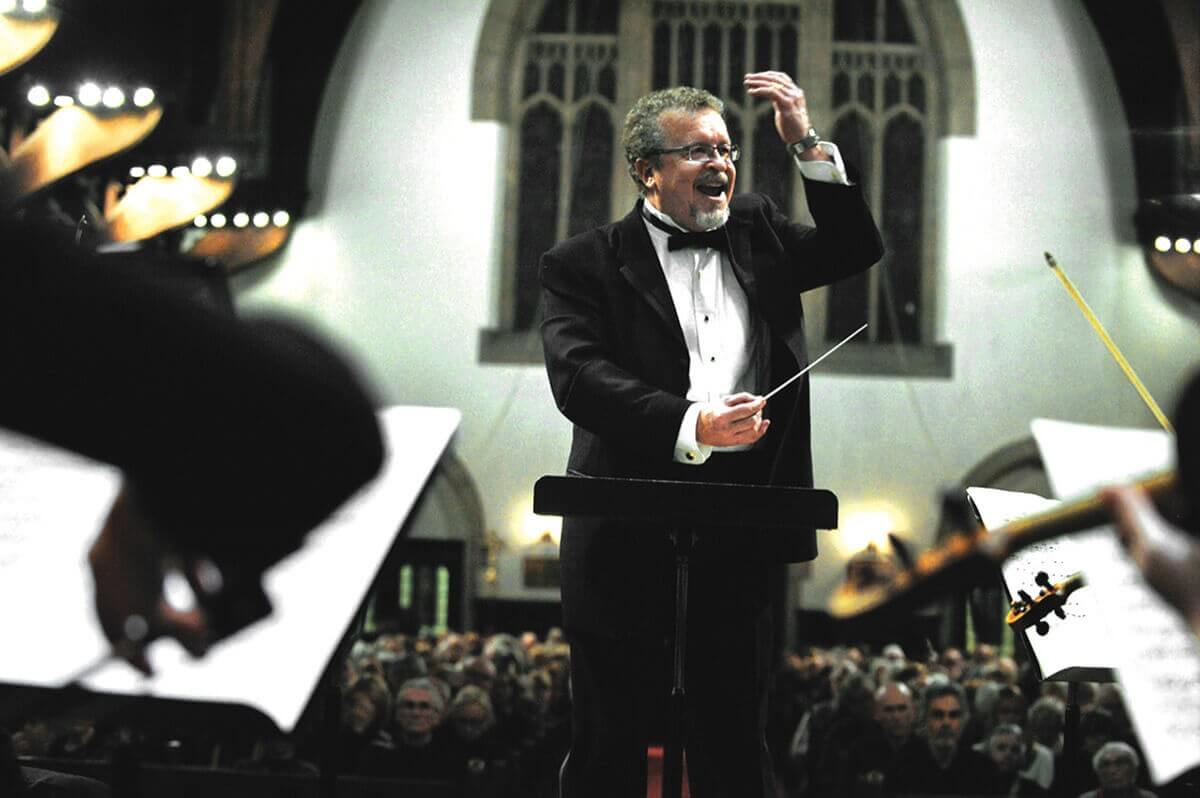
The Toronto Classical Singers are presenting a holiday concert with a programme that steps outside the usual. The concert, titled A Christmas Gift, will feature conductor Jurgen Petrenko and the Toronto Classical Singers Players along with the choir.
Works by Gerald Finzi and Joseph Haydn are on the programme, both pieces in a joyful mood for the holidays.
The Choir
The Toronto Classical Singers are now in their 31st season of presenting diverse and professional-quality programming. They are partners with the Toronto Classical Players, who accompany the choir, along with collaborative pianist Brahm Goldhamer.
Their conductor Jurgen Petrenko holds Bachelor and Master of Music degrees from the University of Toronto. He is the co-founder and artistic director of Toronto Classical Singers.
After spending several years freelancing as an organist and musician, Jurgen worked as a producer at the CBC for programmes that include Choral Concert, Saturday Afternoon at the Opera, and many more. He currently is the organist of St. John’s Anglican Church in Elora, and teaches the graduate voice majors at the RCM’s Glenn Gould School.
Soloists for the concert will be:
- Lesley Bouza, soprano
- Sandra Boyes, mezzo-soprano
- Stephen McClare, tenor
- Bruce Kelly, baritone
The Music
Two pieces make up the programme.
Gerald Finzi’s In Terra Pax
Gerald Raphael Finzi was born in London in 1901 into a Sephardic Jewish family, and died at the age of 55 in Oxford in 1956. He is best known for his choral works.
His early years were marked by the tragedies of war. He lost his father, three older brothers, and even his music teacher to the battlefields of WWI. Finzi became acutely aware of the fragility of life. He was afflicted in later life with leukemia, and when he composed Terra Pax, it wasn’t clear whether it would be his last piece.
He composed his Terra Pax in 1954, and rescored it as a chamber work in 1956. It’s described as a “Christmas Scene for soprano and baritone soloists, small chorus and small orchestra”.
Gerald told his friend Vaughan Williams that the piece was inspired by an experience he’d never forgotten that took place one Christmas Eve in his 20s. He’d climbed to the top of Chosen Hill in Gloucestershire to reach the cathedral, and had been entranced by the sound of the bells ringing at midnight across fields glistening with frost.
The text comes from Robert Bridges (1844–1930), a Victorian poet and classicist, and St. Luke. His poem Noel: Christmas Eve, 1913 is subtitled Pax hominibus bonae voluntatis (Peace and goodwill to all men). Finzi used the link provided by the subtitle to incorporate St. Luke’s story of the angels appearing to shepherds into the work.
The baritone soloist is the voice of the poet, and the soprano is an angel. The chorus narrates the biblical text. As it opens, the poet is standing on a hill, listening to the sound of distant church bells.
Despite the troubles of the composer’s own life, the piece is sincere and optimistic in its mood.
Joseph Haydn: Missa Sancti Nicolai (Mass no. 6 in G Major)
Haydn struggled earlier in his career, but was a sought after Kapellmeister when he took a position with Prince Paul Anton of the wealthy Esterházy family in 1761. Paul Anton was succeeded by Nikolaus I from 1762 to 1790. As his patron, Haydn’s output followed Prince Nikolaus’ tastes, although this was relaxed somewhat when he renegotiated his contract in 1779. He wrote the Missa Sancti Nicolai, Mass No. 6 in G major, Hob. XXII/6, also known as the Nicolaimesse, in 1772, later revising it in 1802, long after Prince Nikolai’s death in 1790.
The feast of St. Nicholas falls on December 6, and is a traditional holiday in Austria and many European countries. It’s celebrated by giving children cookies, treats and gifts. It was also, notably, a nod to his patron’s namesake saint.
The mass is scored for SATB soloists and choir, two oboes, two horns, strings, and organ. The revision of 1802 added two trumpets and timpani. It consists of several movements:
- Kyrie Allegretto, G major
- Gloria Vivace, G major; “Quoniam tu solus sanctus” Allegro
- Credo Allegro, G major; “Et incarnatus est” Adagio, G minor; “Et resurrexit” Allegro, G major
- Sanctus Adagio, G major; “Pleni sunt coeli” Allegro, G major
- Benedictus Moderato, D major; “Osanna in excelsis” Allegro, G major
- Agnus Dei Adagio, G minor; “Dona nobis pacem” Allegretto, G major
The Concert
The concert takes place on December 10 at Christ Church Deer Park in Toronto. More information and tickets available [HERE].
Are you looking to promote an event? Have a news tip? Need to know the best events happening this weekend? Send us a note.
#LUDWIGVAN
Get the daily arts news straight to your inbox.
Sign up for the Ludwig Van Toronto e-Blast! — local classical music and opera news straight to your inbox HERE.
- PREVIEW | SUMMER OPERA LYRIC THEATRE Presents Handel’s Xerxes, Mozart’s Idomeneo & Puccini’a La Boheme July 26 To August 4 - July 26, 2024
- PREVIEW | YENSA Festival V.2 Offers Black Flames Performances & Other Ways To Celebrate Black Women In Dance - July 25, 2024
- PREVIEW | Canadian Talent Conspicuous In The Met: Live In HD 2024-25 Season - July 25, 2024



